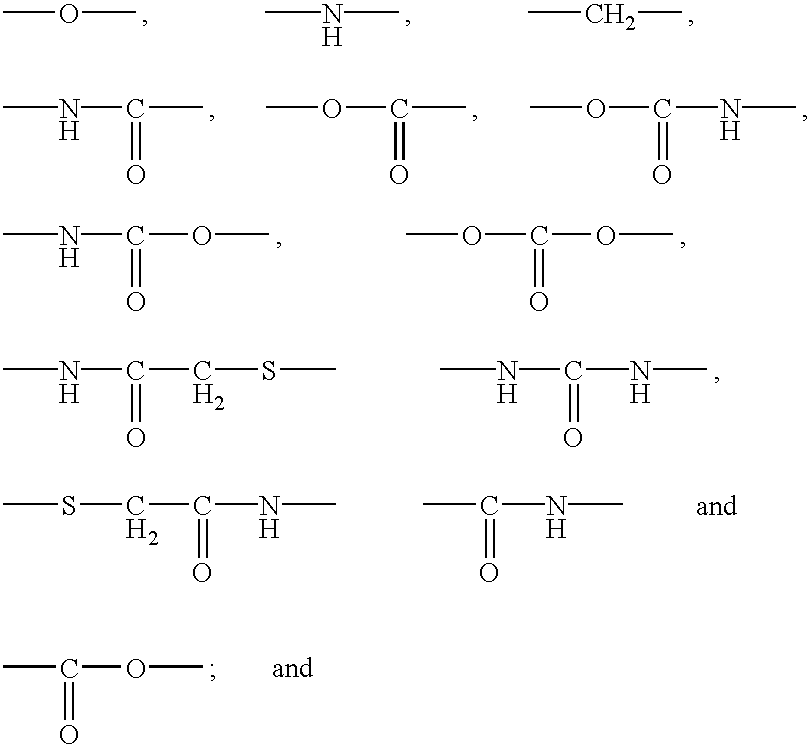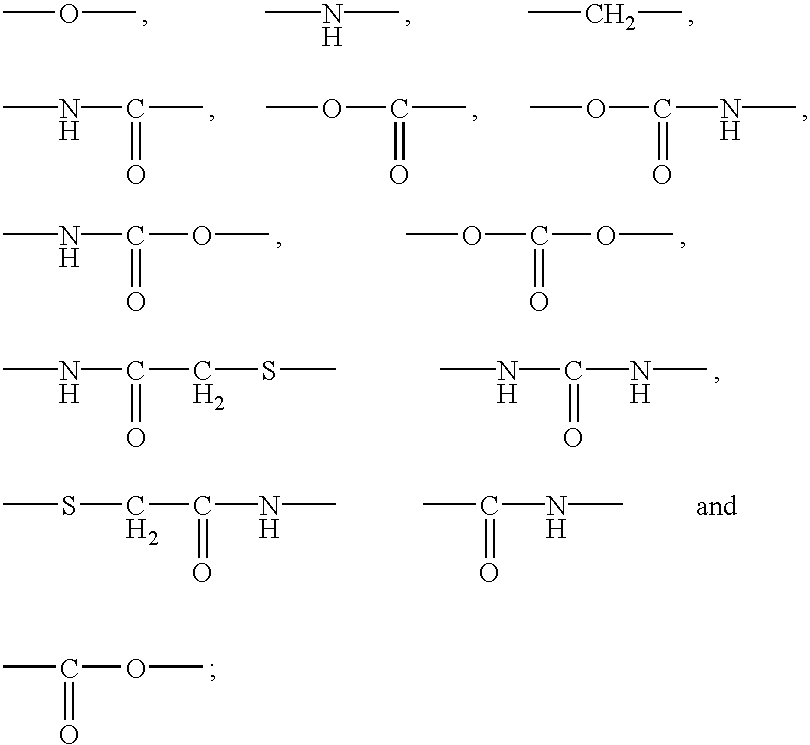Polypeptide immobilization
a polypeptide and immobilization technology, applied in the field of alkanethiol, can solve the problems of loss of activity, loss of activity on the chip, and inability to achieve background signal at an acceptable level,
- Summary
- Abstract
- Description
- Claims
- Application Information
AI Technical Summary
Benefits of technology
Problems solved by technology
Method used
Image
Examples
example 1
Synthesis of Soluble Reactant Ligand for GST
[0174] n-Pentyldimethoxybenzene 1. 3.12 g (22.58 mmol) of 1,4-dimethoxybenzene was dissolved in 25 ml of THF. To this solution was added 10.8 ml of 2.5 M n-butyllithium solution in pentane. The addition was carried out dropwise at 0.degree. C. under nitrogen over 20 min. The reaction mixture was stirred for 1 hour at room temperature, after which 3.36 ml of n-bromopentane at 0.degree. C. was added, and the resultant mixture stirred for 15 hours at room temperature. Solvent was removed under reduced pressure, and the reaction mixture was dissolved in ethyl acetate, washed with water and brine, and dried over MgSO.sub.4. Removing the solvent under vacuum gave 4.4 g (93.5% yield) of I as a clear oil.
[0175] n-Pentyltetrachlorodimethoxybenzene 2. 520 mg (2.496 mmol) of n-pentyldimethoxybenzene 1 was dissolved in 10 ml of acetic acid. To this solution was added 3.14 g (3 eq) benzyltrimethylammonium tetrachloroiodate. The reaction mixture was sti...
example 2
Inhibition Studies
[0180] The binding and covalent bonding of a conjugate of formula (6) to GST was measured using the method described (Kitz and Wilson, 1962). FIG. 8 presents a graph of the results. This analysis showed that the inhibitor binds GST with a dissociation constant of 285.+-.120 mM, and that the bound complex undergoes an irreversible cross-linking reaction with a first-order rate constant of 0.11.+-.0.03 min.sup.-1 (FIG. 8B). These mechanistic constants predicted that the immobilization of GST to surfaces presenting the reactant ligand would proceed with a half-life of 8 minutes when a 1 mM solution of protein was used. 25
example 3
Synthesis of Immobilizable Reactant Ligand for GST
[0181] Ditetrahydropyran-hydroquinone 7. To a solution of hydroquinone (5 g, 45.4 mmol) in THF was added dihydropyran (17ml, 4 eq) and HCl (2 ml). The mixture was stirred for 8 hr. The solvent was removed, and the mixture was mixed with ethyl acetate (EA), washed with saturated NaHCO.sub.3, water and brine, and dried over MgSO.sub.4. Silicagel chromatography (hexane:EA=4:1) and washing with hexane gave 2.5 g (20% yield) of 7 as a white solid.
[0182] Ditetrahydropyran-hydroquinone-hexylbromide 8. 503 mg (1.81 mmol) of ditetrahydropyran-hydroquinone 7 was dissolved in 25 ml of THF. To this solution was added 1.6 ml (1.5 eq) of 1.7 M t-butyllithium solution in pentane. This addition was dropwise at 0.degree. C. under nitrogen over 20 min. The reaction mixture was then stirred for 1 hr at room temperature. To this mixture was added 1.1 ml (4 eq) of 1,6-dibromohexane at 0.degree. C., followed by stirring for 15 hr at room temperature. The ...
PUM
| Property | Measurement | Unit |
|---|---|---|
| temperature | aaaaa | aaaaa |
| temperature | aaaaa | aaaaa |
| thickness | aaaaa | aaaaa |
Abstract
Description
Claims
Application Information
 Login to View More
Login to View More - R&D
- Intellectual Property
- Life Sciences
- Materials
- Tech Scout
- Unparalleled Data Quality
- Higher Quality Content
- 60% Fewer Hallucinations
Browse by: Latest US Patents, China's latest patents, Technical Efficacy Thesaurus, Application Domain, Technology Topic, Popular Technical Reports.
© 2025 PatSnap. All rights reserved.Legal|Privacy policy|Modern Slavery Act Transparency Statement|Sitemap|About US| Contact US: help@patsnap.com



